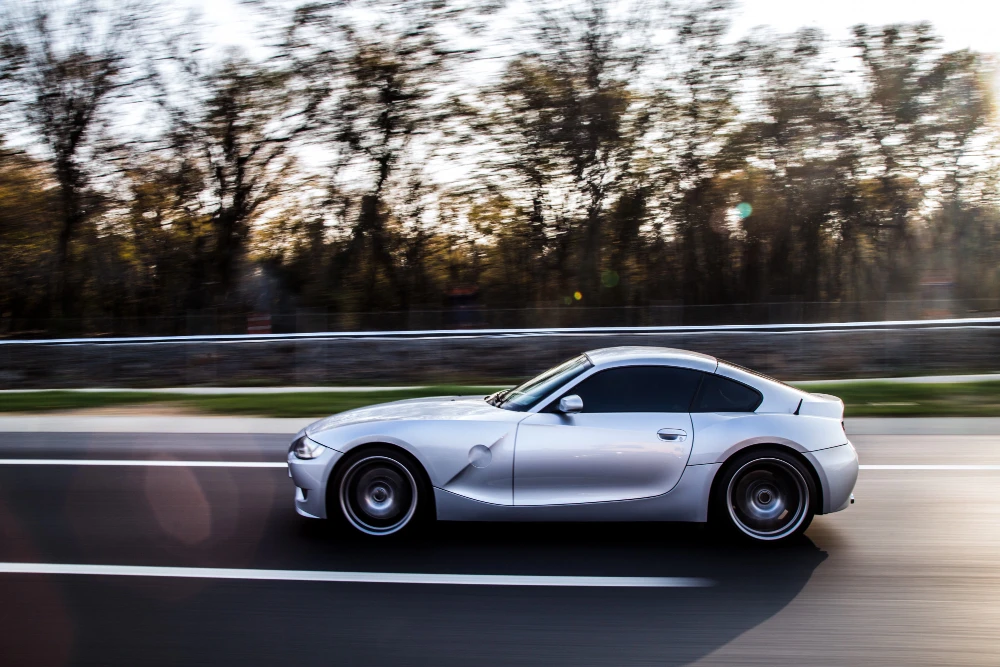Porsche has established an excellent reputation for creating some of the most reliable and focused sports cars for nearly seventy years. From iconic car models such as 911 to modern SUVs like Cayenne, Porsche has always been ahead in innovation, technology and development while remaining true to its history. Porsche developed cars that use superior German engineering that are considered the most reliable and performance-driven sports cars on the race track as well as on the open road. If you are a car enthusiast, you will agree that a Porsche is always an obvious thing when it comes to driveability and collectability. It will be a winner on race day and an investment that increases in value over time. However, to appreciate the refinement and technology of Porsche supercars, it is essential to understand the company’s history and the people who invented these fantastic machines.
In this article, we will explore Porsche’s history and how it became one of the world’s most recognized and popular sports car makers.
A Brief History Of Porsche

The man behind all these great inventions was Professor Ferdinand Porsche, who is always pronounced as Porsch-AH. He was a gifted automotive engineer from the Czech Republic who started his career as an apprentice at his father’s plumbing business.
Porsche moved to Vienna to study as a teenager before joining, and at the age of 23, he joined luxury coachbuilder Jacob Lohner. He made waves in the motoring world by designing the engine for a revolutionary electric car, the Egger-Lohner C.2 Phaeton. In 1930, Porsche got a consultancy job to manufacture individual components for an advanced diesel and petrol engine called Hesselmen.
The following year, on 25 April 1931, the history of the Porsche company started in Stuttgart, as the professor entered the company on the commercial register. Although in the beginning, the brand did not develop cars under its name, it got attention by designing the most affordable German cars. This resulted in the world-famous Volkswagen Beetle, which was among the most successful car designs of all time.
Most automobile historians recognize the Lohner-Porsche as the first full-electronic automobile.
Although this car proved its commercial viability at the 1900 Paris World Expedition, it was initially designed to be used as a racing car. Even though it is vast in size and heavier in weight, Lohner-Porsche was surprisingly fast off the line. However, due to the significant weight of its batteries, the car struggled to climb hills. Furthermore, the car’s battery life was concise.
Over the course of development, the Lohner-Porsche underwent several variations and emerged as the ancestor type of vehicle that today we recognize as a “hybrid.” That newly evolved vehicle was named the “Lohner Porsche Mixte Hybrid.”
Lohner-Porsche Mixte: Unlike its previous version, the Mixte Hybrid had a Daimler internal combustion engine. The engine was connected to a generator that powered the electric motors mounted within the hubs.
The Lohner-Porsche Mixte Hybrid Was the first petroleum electric hybrid vehicle (HEV), and a clear demonstration of Ferdinand Porsche’s brilliance was particular. Besides being efficient, the car proved to be a performance vehicle with a land speed record of 35 mph. By 1905, Ferdinand Porsche was recognized as one of Austria’s leading automotive engineers.
Type 356: By 1939, the futuristic vehicle Porsche 64 was developed, and it took a long time until 1948 when the brand broke ground with the introduction of Type 356. This innovative vehicle had a design that echoed the Beetle and used technology similar to Volkswagen with better engineering to reach speeds up to 135 km/h.
F1: After the Type 356, Porsche continued to enjoy the racing fling with the development of F1, especially in endurance events such as the 24 Hours of Le Mans, where the iconic 917 secured the brand’s first overall win in 1970.
With the development of the 911 in 1964, Porsche became popular as a high-quality sports car built for everyone. In the next few decades, the motoring world was thrilled with the release of several iconic Porsche cars, such as the 930 Turbo (1975), the 959 (1986), the Carrera GT (2004), and the 918 Spyder (2013).
Now, Porsche is one of the top sports car companies in the world, always innovating and exciting people with advanced technology cars. With its Mission X concept car, Porsche is giving us a glimpse into the features of future sports cars, which may be an all-electric supercar designed to become the fastest road vehicle.
The History Of Motoring Icon: Porsche 911
![]()
The Porsche 911 was designed as a larger and more comfortable replacement for the 356. It debuted at the 1963 Frankfurt Motor Show, but due to a dispute with Peugeot over legal rights to car names, the name 901 was swiftly changed to 911.
The earliest versions 911 had two-liter rear-mounted air-cooled engines that produced only 130 HP. However, the chassis design stood out. Minimalistic yet bold, it offered a distinctive fastback silhouette, giving this car a ”fat and happy” front with an aggressive, assertive rear. Today, the 911 is accepted as the epitome of sports car design.
Today, with more than one million 911s sold, it has become a benchmark in sports cars. Designed to perform on the streets and on the track, it earned a great reputation as one of the most accepted sports cars worldwide.
Since its introduction in 1963, the 911 has been a constant at racetracks globally, from the Monte Carlo Rally to the 24 hours of Daytona. Yet, beyond its racing legacy, 911’s understated prestige and its versatility and reliability as a road car make it a legend.
Whether cruising the autobahn in your 911 and enjoying a luxury self-drive to Germany or traveling along the stunning mountain pass, there are few thrills compared to being behind the wheel of a Porsche 911. Ferry Porsche, son of Ferdinand Porsche Sr., famously said, “The 911 is the only car you could drive on an African safari or at Le Mans, to the theater or through New York City traffic.” This statement captures the unmatched versatility and timeless appeal of this iconic series.
Designs And Variants Of Porsche Cars
Over the years, Porsche introduced several generations of the 911, including the first true adoption of the G-series in 1975. The G-series that was most exciting for users was the iconic 911 Turbo, which came with a new look, a mighty 260 HP engine, and a speed of 250 km/h.
After that, the 964 series was introduced with a refined design of the 911 and tons of advanced tech features. The new Carrera 4 introduced four-wheel drive, power steering, ABS brakes, and airbags, marking a leap forward in performance and safety.
By 1994, Porsche introduced a new series, the final air-cooled generation of the 911. The wild and wonderful GT2 series had an explosive 3.6-litre twin-turbo engine and a lighter chassis. Although less than 200 of this series were produced, the GT2 remains among the most sought-after 911s in history.
In 1997, the era of air-cooled engines was over, and the era of water-cooled engines started with the introduction of the 996 generation. A major addition to this generation was the arrival of the legendary, track-ready GT3.
More recently, the 992 series has carried forward the 911’s911’s ethos of “evolution, not revolution”—because why change what’s already exceptional? Like the preceding 991 generation (2011-2019), the 992 brings notable updates: a broader rear, sharper contours, minimalist interiors, and a distinctive rear light bar. Today, Porsche continues to refine its icon, with one of the most significant changes on the horizon—introducing hybrid power to future 911 models.
Today, Porsche continues to evolve by adding hybrid power to future models, which is one of the biggest changes in 911 history.
The Design, Philosophy and Brand Value Of Porsche
Although Porsche constantly innovates and progresses, it rarely deviates from the essence that makes its cars so iconic. As Porsche CEO Oliver Blume said, “At its core, the Porsche 911 remains the same sports car despite our unwavering commitment to progress. Our company operates with that same philosophy.”
The design and philosophy revolve around its heritage, and there is a strong desire to preserve the brand identity that all Porsches have. Every Porsche is designed so that anyone can identify it as a Porsche. However, a subtle distinction is always maintained, which means it is easy to differentiate between a 911, a Boxster, or a Cayman.
One significant brand identity of Porsche cars is an air intake at the front instead of a typical radiator grille. Porsche ensures that i
One brand-identity cue is that all Porsches are united by an air intake at the front instead of the typical radiator grille. Porsche maintains this philosophy across all its models, even with larger vehicles like the Panamera sedan and Cayenne SUV, underscoring the brand’s dedication to preserving its distinct identity.
Porsche Motto
Over the decade, Porsche’s mottos have changed several times, but the most memorable and impactful one must be “There is no Substitute.” This slogan describes everything about Porsche and remains true to this day.
Porsche Design
In 1972, Ferdinand Alexander Porsche established a subsidiary company named Porsche Design. This company extended Porsche’s legacy and brought its philosophy to everyday items, including stationery, pipes, and glasses.
This lifestyle brand’s debut product was the P’6510P’6510 watch in 1972, which was the world’s first blacked-out chronograph.
Based in Zell am See, Austria, Porsche’sPorsche’s design branch creates a range of products, from Bluetooth sports headphones to 911-inspired eBikes, earning numerous awards for their exceptional form and function.
What Makes Porsche Unique?
One of the most significant things that makes Porsche unique is that all Porsche Porsche’s cars are easily identifiable because of the marque’s commitment to consistency in brand identity.
Another brand association that distinguishes Porsche from other sports car brands is that it goes the extra mile to fulfill the needs of its customers. This is illustrated with the Porsche Exclusive Manufatur, which allows customers to build a Porsche entirely unique to them. It customizes everything, from interior leather to wheels and tinted headlights to steering wheels. No two Porsches produced by Exclusive Manufaktur are identical. Indeed, there is nothing like getting a Porsche specially designed for you.
The marque is one of the greatest manufacturers in history, with over 30,00 victories to its name. Porsche is distinctive in many branches of motorsport, especially in long-distance races such as the 24 Hours of Le Mans. With 19 overall wins, Porsche holds a record for the most race victories at Le Mans.
Conclusion
Porsche’s journey from its early innovations to its current status as a global icon is a testament to its dedication to precision engineering, timeless design, and an unwavering commitment to excellence. From the pioneering Lohner-Porsche to the trailblazing 911 and the upcoming hybrid models, Porsche consistently combines heritage with forward-thinking technology, making it a leader both on the road and in motorsport. This relentless pursuit of perfection, paired with a deep respect for tradition, has cemented Porsche’s legacy as more than just a car brand—it’s a symbol of engineering mastery and a true embodiment of automotive passion. For enthusiasts and collectors alike, a Porsche remains a celebration of performance, innovation, and the unmistakable spirit of an enduring legend.
Read More: Petrolheadonism Underground WEMBLEY PARK, 15/16 APRIL 2023
Read More: Getting Your Supercar Ready To Be Sold









